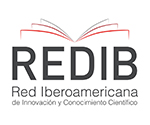“El profesor es como una criada”: la posición de la mujer re-velada por los vehículos metafóricos femeninos en chino
DOI:
https://doi.org/10.18002/sin.v17i2.8233Palabras clave:
Metáfora; Género; Marco de dinámica del discurso; Wei Cheng.Resumen
Estudios previos han demostrado que muchas metáforas conceptualizan a las "mujeres" de manera peyorativa para expresar opiniones negativas sobre ellas. Sin embargo, rara vez se ha abordado cómo las "mujeres" funcionan como vehículos metafóricos en el discurso. En este trabajo, se aplica un enfoque de dinámica del discurso para realizar un análisis multidimensional de los contextos lingüísticos, cognitivos, afectivos y socio-culturales-históricos de los 25 vehículos metafóricos femeninos identificados en la novela china moderna Wei Cheng. El objetivo es iluminar cómo este tipo de metáforas reflejan las ideas, actitudes y valores hacia las mujeres en el discurso chino. Los resultados muestran que, al resaltar ciertos rasgos negativos de sus temas (como personajes masculinos, personajes femeninos, profesorado universitario y otros objetos no humanos), estos vehículos metafóricos femeninos también reflejan una visión correspondiente sobre las mujeres. Es crucial destacar que, considerando el contexto histórico de la novela y el alto grado de lexicalización de algunas de estas metáforas en chino, estos vehículos metafóricos presentan una visión sexista de las mujeres en la sociedad tradicional china y contribuyen a reforzar los estereotipos de género femenino.
Descargas
Métricas alternativas
Descargas
Publicado
Versiones
Cómo citar
Número
Sección
Licencia

Esta obra está bajo una licencia internacional Creative Commons Atribución-NoComercial-CompartirIgual 4.0.
Sinologia Hispanica. China Studies Review considers all manuscripts on the strict condition that
- The authors grant on a nonexclusive basis the exploitation rights (reproduction, distribution, public communication and transformation) of the work accepted for publication to the University of León. The authors can establish, on their own, additional agreements for the non-exclusive distribution of the version of the work published in the journal (for example, placing it in an institutional repository or publishing it in a book), always acknowledging the initial publication in this journal.
- The manuscript is your own original work, and does not duplicate any other previously published work, including your own previously published work.
- The manuscript is not currently under consideration or peer review or accepted for publication or in press or published elsewhere.
- The manuscript contains nothing that is abusive, defamatory, libellous, obscene, fraudulent, or illegal.
- Please note that Sinologia Hispanica uses Turnitin software to screen manuscripts for unoriginal material. By submitting your manuscript to Sinologia Hispanica you are agreeing to any necessary originality checks your manuscript may have to undergo during the peer-review and production processes. Any author who fails to adhere to the above conditions will be rejected.
- Authors are allowed and encouraged to electronically disseminate the pre-print versions (version before being evaluated) and / or post-print (version evaluated and accepted for publication) of their works before publication, since it favors their circulation and earlier dissemination and with it a possible increase in its citation and scope among the academic community.
Sinologia Hispanica is under Creative Commons Attribution-NonCommercial-ShareAlike 4.0 International License. You can read more about this license in versión informativa and texto legal.








